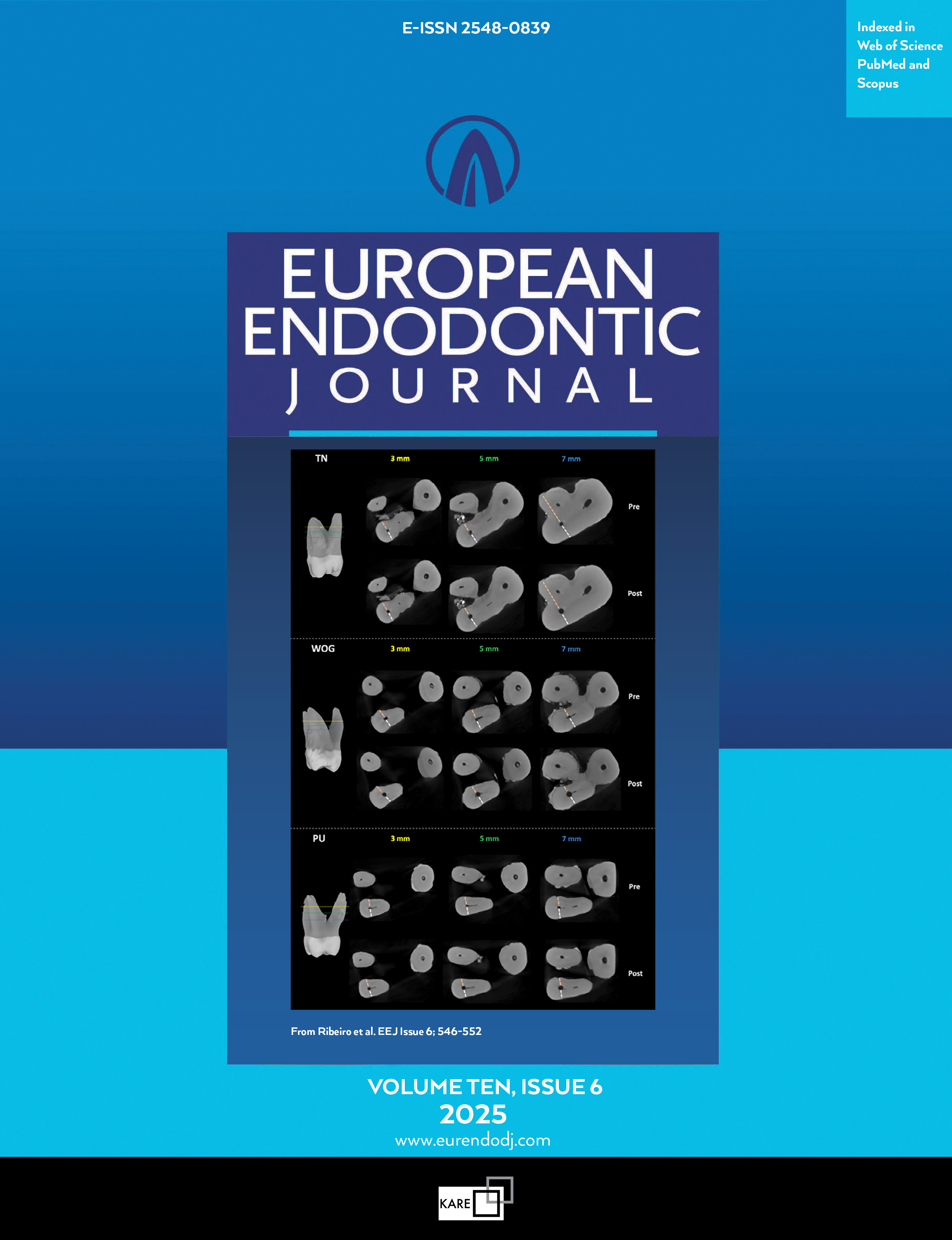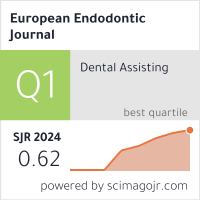Metrics
2024 IMPACT FACTOR
5 year Impact Factor
Eigenfactor Score
2024 CiteScore
Journal Citation Reports
(Clarivate 2025, JIF Rank)
Evaluation of Cone Beam Computed Tomography Resolution, 3D Printing Resolution and Drilling Depth on Drilling Accuracy in Guided Endodontics: An In-Vitro Study
Marine Hénaut1, Maarten Meire2, Jérôme Vandomme3, Lieven Robberecht11Department of Restorative Dentistry and Endodontics, University of Lille, Faculty of Odontology, Inserm, CHU Lille, Lille, France2Department of Oral Health Sciences, Ghent University, Section of Endodontology, Ghent, Belgium
3Department of Prosthodontics, University of Lille, Faculty of Odontology, Inserm, CHU Lille, Lille, France
Objective: The aim of this study was to evaluate the influence of cone-beam computed tomography (CBCT) resolution, 3D printing resolution, and drilling depth on drilling accuracy in guided endodontic access.
Methods: Fifty-six printed canines were designed, fabricated, and mounted in maxillary arch models. Preoperative CBCT and 3D surface scan were matched and used to design a surgical guide with different planning parameters: 1) reference (high-resolution CBCT (80 µm) and 3D printing (50 µm), shallow drilling (14 mm)), 2) low-resolution CBCT (120 µm), 3) low-resolution 3D printing (100 µm) and 4) deep drilling (high-resolution CBCT (80 µm) and 3D printing (50 µm), deep drilling (21 mm)). Guided access into the printed canines was performed in a simulated clinical setting. A postoperative CBCT was matched with the planning data in order to determine the angular and linear (total, mesiodistal, buccolingual and depth) deviation between the planned and performed cavities. Mann-Whitney test was used to analyse differences between the reference group and each test group.
Results: Angular, total linear and buccolingual deviations were significantly higher in the low-resolution CBCT group than in the reference group (median: 3.10° and 2.0° (p<0.01), 1.41 mm and 1.06 mm (p<0.05) and 0.77 mm and 0.41 mm (p<0.05), respectively). Depth deviation was significantly higher in the low-resolution 3D printing group than in the reference group (median: 0.90 mm and 0.45 mm (p<0.01), respectively). No other significant differences between the groups were noted (p>0.05).
Conclusion: Higher CBCT resolution resulted in lower angular and total linear deviation during guided endodontic access. Higher 3D printing resolution yielded lower vertical linear deviation. (EEJ-2024-05-086)
Keywords: Access cavity preparation, accuracy, printed guide, pulp canal obliteration, static navigation
Manuscript Language: English
(474 downloaded)



